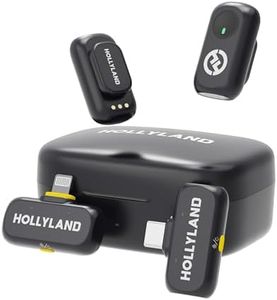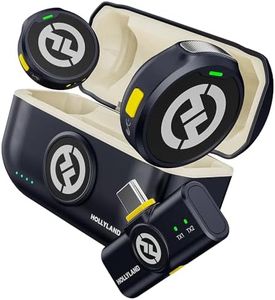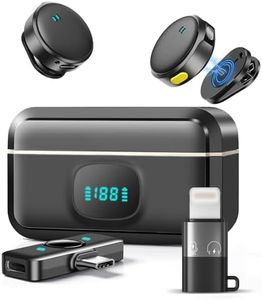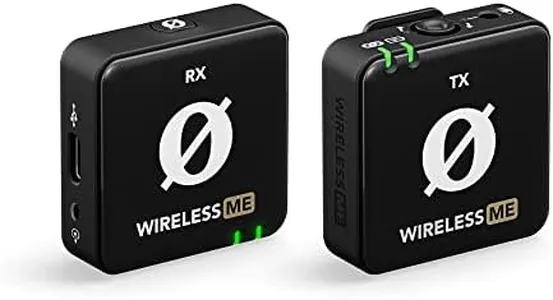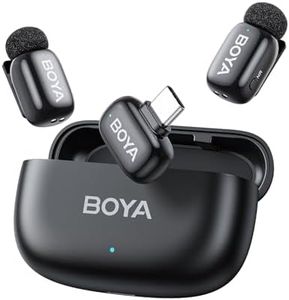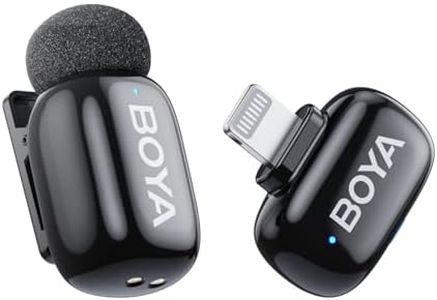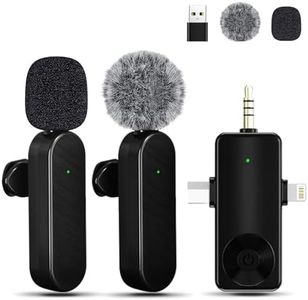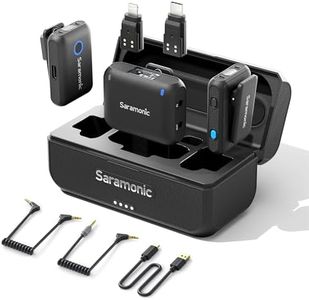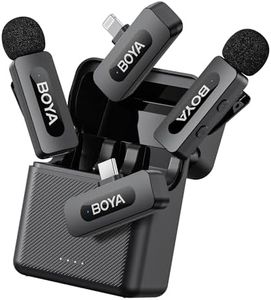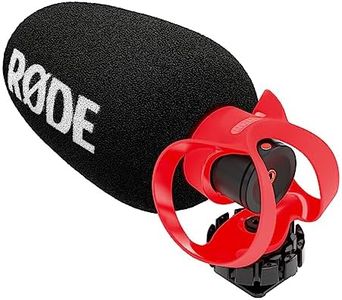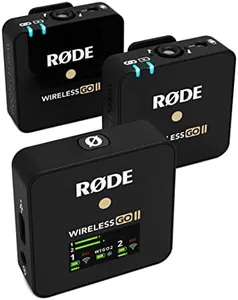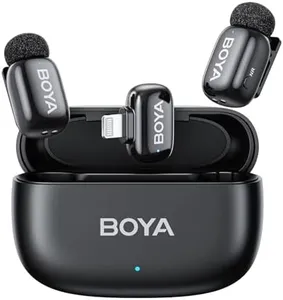We Use CookiesWe use cookies to enhance the security, performance,
functionality and for analytical and promotional activities. By continuing to browse this site you
are agreeing to our privacy policy
10 Best iPhone Microphones
From leading brands and best sellers available on the web.Buying Guide for the Best iPhone Microphones
Choosing an iPhone microphone can greatly enhance the audio quality of your videos, podcasts, video calls, or music recordings. The iPhone's built-in microphone is suitable for casual use, but adding an external microphone can give your recordings more clarity, reduce background noise, and make your content appear more professional. When choosing a microphone, think about your recording environment, the type of content you're creating, and how easy it is to use the microphone with your phone.Type of MicrophoneThere are several common types of microphones for iPhones: lavalier (clip-on), shotgun, handheld, and condenser microphones. Lavalier mics are small and clip onto your clothing, making them great for interviews or presentations. Shotgun mics are directional and pick up sound from in front of the mic, which is useful for recording videos or events. Handheld mics are ideal for interviews or situations where you need to pass the mic between speakers. Condenser mics are sensitive and pick up a wide range of frequencies, great for music and vocal recordings. Think about how and where you’ll be recording to choose a type that fits your main use.
ConnectivityiPhone microphones connect in different ways: Lightning port, headphone jack (if available), or wirelessly via Bluetooth. Lightning mics are generally the easiest and most reliable as they plug directly into modern iPhones, while Bluetooth models offer convenience but may have a slight audio delay. If your iPhone doesn't have a headphone jack, you’ll likely want to stick with Lightning or Bluetooth options. Decide based on what’s most compatible and convenient for your setup.
Polar PatternA microphone's polar pattern describes how it picks up sound from different directions. The main types for iPhone mics are omnidirectional (picks up sound from all around) and cardioid (focuses on sound from the front). Omnidirectional mics are great if you’re recording several voices or ambient sounds, while cardioid mics are preferred when you want to focus on one sound source and reduce surrounding noise. Choose based on whether you need to capture everything around you or isolate a specific voice or instrument.
Sensitivity and Sound QualitySensitivity refers to how well the microphone picks up quiet sounds, while sound quality is about how clear and accurate the audio is. Higher sensitivity is useful for soft speakers or musical instruments but can also pick up more background noise. If you’re recording in a quiet setting, high sensitivity is advantageous. For noisy environments, a less sensitive mic may help reduce unwanted sounds. Listening to sample recordings, if available, can help you judge whether a microphone will meet your needs.
Portability and Build QualityPortability is important if you plan to record on the go. Smaller, lighter microphones are easier to carry, but make sure they’re also sturdy enough for travel. Build quality affects durability and longevity—metal bodies tend to last longer than plastic. Think about how often and where you’ll use the microphone to determine if portability or ruggedness is more important for you.
Included AccessoriesSome iPhone microphones come with useful accessories like windscreens (to reduce wind noise), mounts, clips, or carrying cases. Accessories can make recordings easier and improve audio quality, especially for outdoor use or interviews. Consider if you’ll need these extras for your intended use, as they can enhance your recording experience.
